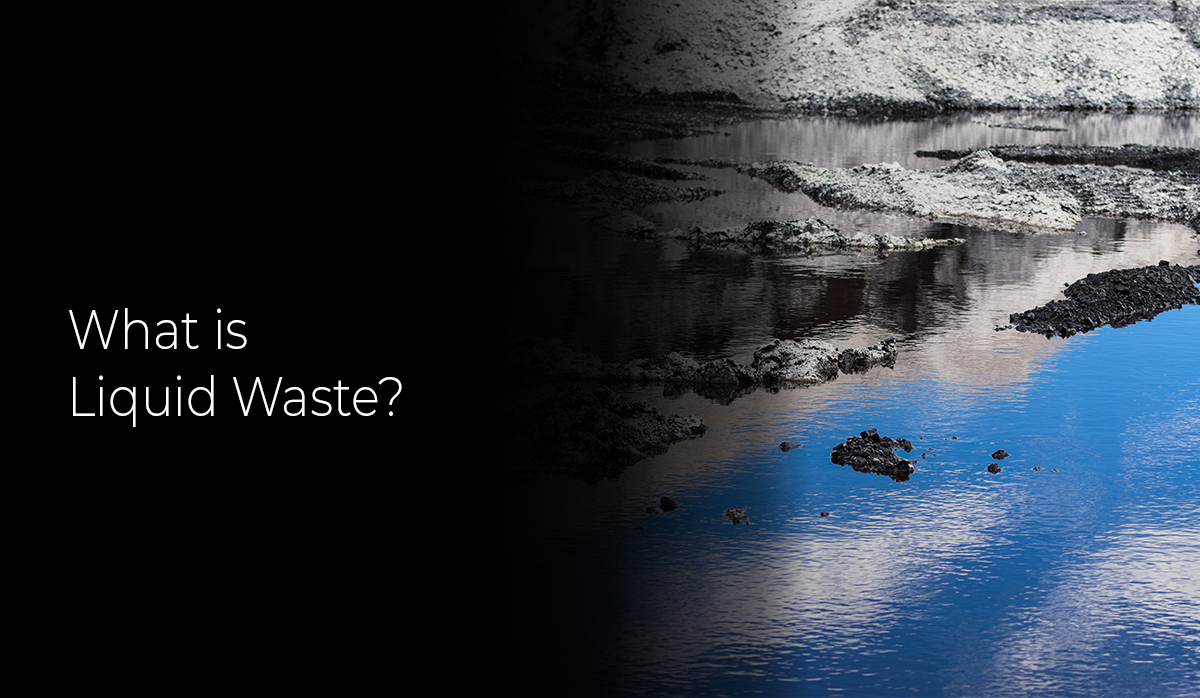Industrial Wastewater Treatment: Advanced Methods for Effective Monitoring
Industrial Wastewater Treatment: Advanced Methods for Effective Monitoring
Blog Article
Exactly How Liquid Garbage Disposal Works: An In-depth Summary of Techniques and Technologies Employed

Review of Fluid Waste Kind
The complexity of liquid waste types requires a complete understanding of their qualities and ramifications for disposal. Liquid waste can generally be categorized right into numerous types, consisting of commercial, metropolitan, agricultural, and harmful waste. Each classification displays distinct residential properties, requiring details administration approaches to minimize environmental and health dangers.
Industrial liquid waste originates from producing processes and typically has a series of pollutants, such as hefty metals, solvents, and natural compounds. Community fluid waste, mostly consisting of wastewater from households and industrial establishments, has organic matter, nutrients, and microorganisms (industrial wastewater treatment). Agricultural fluid waste, consisting of drainage from farms, may contain plant foods, pesticides, and animal waste, posing threats to water quality and environments
Harmful fluid waste is characterized by its poisoning, sensitivity, or prospective to cause damage. Comprehending these diverse liquid waste kinds is important for creating effective disposal methods and making sure conformity with ecological regulations.
Physical Treatment Techniques

Testing is the preliminary step, where bigger bits and debris are gotten rid of from the fluid waste using displays or grates. In sedimentation tanks, much heavier particles resolve at the bottom, forming a sludge layer, while the made clear liquid can be further dealt with.
Filtration is an additional crucial technique that involves passing the fluid through permeable materials, such as sand or membrane layers, to catch smaller fragments. This step boosts the quality of the fluid, making it appropriate for succeeding treatment procedures.

Chemical Therapy Techniques
Chemical therapy techniques are crucial for efficiently taking care of liquid waste, specifically in dealing with liquified and colloidal contaminants that physical approaches may not effectively remove. These methods make use of various chemical representatives to neutralize, precipitate, or change hazardous compounds right into much less hazardous types.
One usual method is coagulation and flocculation, where chemicals such as alum or ferric chloride are contributed to advertise the gathering of suspended bits. This procedure boosts sedimentation, permitting much easier elimination of the resulting sludge. Additionally, oxidation procedures, using agents like chlorine or ozone, are employed to break down complicated natural substances and pathogens, rendering the waste much safer for discharge or additional therapy.
Neutralization is an additional critical technique, which changes the pH of acidic or alkaline waste streams to neutral levels, stopping possible injury to downstream systems and the setting. Furthermore, advanced oxidation processes (AOPs) utilize combinations of oxidants and ultraviolet light to deteriorate consistent contaminants, accomplishing a greater level of treatment effectiveness.
Biological Treatment Processes
Biological treatment processes play a vital duty in the monitoring of fluid waste by using bacteria to disintegrate raw material and decrease contaminant levels. These procedures can be generally classified right into cardiovascular and anaerobic treatments, each employing details microbial areas to attain efficient waste deterioration.
Aerobic treatment entails the usage of oxygen to assist in the malfunction of organic materials by microorganisms. This procedure is frequently executed in activated sludge systems, where oygenation containers offer a conducive setting for microbial development, resulting in the oxidation of organic toxins. The resultant biomass can be separated from treated effluent via sedimentation.
In contrast, anaerobic treatment takes place in the absence of oxygen, relying on various germs to break down natural matter. This method is specifically useful for high-strength waste, as it creates biogas, a sustainable energy resource, while decreasing sludge manufacturing. Technologies such as anaerobic digesters are often employed in local and industrial applications.
Both cardio and anaerobic biological treatments not just reduce original site the ecological effect of fluid waste however additionally help with source recovery, making them crucial elements of lasting waste management methods. Their versatility, performance, and effectiveness support their prevalent execution throughout numerous sectors.
Arising Technologies in Disposal
Ingenious methods to liquid waste disposal are rapidly progressing, driven by developments in innovation and an enhancing focus on sustainability. Amongst these arising innovations, membrane layer bioreactors (MBRs) have obtained grip for their capability to incorporate organic treatment with membrane filtration, leading to high-grade effluent that can be recycled in various applications. MBRs enable smaller footprints and much more reliable procedures contrasted to typical systems.
Another promising development is the use of anaerobic food digestion incorporated with nutrient Homepage recuperation technologies, which not just deals with fluid waste yet additionally creates biogas and recuperates useful nutrients like nitrogen and phosphorus. This double benefit improves resource efficiency and lowers ecological influence.
Furthermore, advanced oxidation processes (AOPs) are being adopted for the destruction of intricate natural contaminants. These methods utilize effective oxidants and catalysts to damage down impurities at the molecular level, providing a highly reliable option for difficult waste streams.
Moreover, the assimilation of expert system and artificial intelligence in waste monitoring systems is enhancing operational performance and anticipating maintenance, bring about minimized costs and boosted ecological compliance. These modern technologies show a significant change towards even more efficient and sustainable liquid waste disposal methods.
Conclusion
In conclusion, efficient fluid waste disposal demands an extensive understanding of different strategies and modern technologies. By continuously advancing these methods, it comes to be possible to deal with the growing difficulties linked with fluid waste, ultimately contributing to ecological defense and resource recovery.
Liquid waste disposal is an essential aspect of environmental administration, requiring a detailed understanding of different methods and useful link modern technologies customized to various waste kinds. Fluid waste can generally be classified right into a number of kinds, including industrial, community, agricultural, and dangerous waste. Agricultural liquid waste, including runoff from farms, may contain plant foods, chemicals, and pet waste, presenting dangers to water high quality and ecological communities.
Numerous physical therapy techniques play a vital function in managing liquid waste properly - industrial wastewater treatment.In verdict, reliable fluid waste disposal requires an extensive understanding of various techniques and modern technologies
Report this page